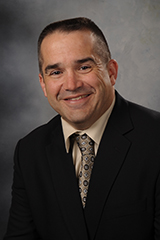April 17, 2018
Understanding and Engaging the Peoples and Communities of Kansas

Following the Listening Sessions and the Partnership Meetings, all of the various issues and ideas for improvements were categorized into six strategic emphasis areas. They were first introduced two weeks ago in my Tuesday Letter article, Setting the Stage. As a reminder, the strategic emphasis areas are:
• Understanding and Engaging the Peoples and Communities of Kansas;
• Enhancing Our Programs and Services;
• Improving Our Marketing and Public Relations;
• Developing a Better Workplace;
• Expanding Our Programming Capacity; and,
• Securing and Increasing Our Base Budget Appropriations.
In this issue of the Tuesday Letter, we will be examining the strategic emphasis, Understanding and Engaging the Peoples and Communities of Kansas, and why it is important for us. Understanding and Engaging the Peoples and Communities of Kansas involves:
• Understanding the people we are and should be serving;
• Understanding our changing demographics; and,
• Understanding the education, information and facilitation needs of all the people of Kansas.
We need to reach more people and a greater diversity of peoples. The Extension mission is to empower the public to address the issues they face by providing them with the Land Grant University knowledge and resources needed to address those issues. In 2016-2017, we empowered over 711,333 Kansans based on our reported educational contact numbers to PEARS. That seems like a pretty large number. According to US Population 2017, Kansas had an estimated population of 2.9 million people during the same time frame. If we were to simply take our reported educational contacts divided by the population and called that our market share, we have a 24.5% market share. While that isn’t the entire state population, being able to educate 24 to 25 people out of a 100 Kansans isn’t too shabby. Additionally, when you are reaching that many Kansans, probably a lot of those we do not reach at least know what we do. Extension awareness is not an issue with that high of a market share.
Those who know us, however, use us multiple times per year. If we estimate the number of uses per year at 3 (I am guessing at that number), suddenly that “market share” shrinks from 24.5% to 8.1%. How can we say we serve the public if we are only reaching 8 out of 100 Kansans? With so few using us, the chances of our non-users knowing us reduces – which is detrimental to a publicly funded organization. Simply put, we need to grow our customer base.
We also need to reach a greater variety of peoples. K-State Research and Extension is legally and morally obligated to serve all of the various peoples that reside in Kansas. The table below shows the racial and ethnic diversity of our educational contacts and the racial and ethnic diversity of Kansas. The numbers will not add to 100% due to rounding and the ethnicity and race overlap. As you can see, the race and ethnicity demographic profile does not match the demographic profile for the state of Kansas. We have to do better. We have to reach out to more diverse audiences. We have to be more inclusive, and we have to be intentional about it.
Race or Ethnic Group 2016 – 2017 K-State Research and Extension Educational Contacts 2016-2017 Kansas Race and Ethnic Demographics
White 92.5% 83.8%
Asian 0.8% 2.4%
American Indian 0.5% 1.0%
Black 2.6% 5.9%
Hawaiian/Asian Pacific 0.1% 0.1%
Hispanic 7.0% 10.5%
We clearly can do better. I want more people to experience and benefit from our high quality Extension programs. I want us to increase the number of reported educational contacts by a minimum of ten percent by 2020. I also want us to increase the number of new audience and historically underserved education contacts by a minimum of ten percent by 2020.
How do we reach out to those who do not use our programs and services? How do we purposefully reach out to new and historically underserved audiences? These are the questions we need to discuss and answer as we explore the Understanding and Engaging the Peoples and Communities of Kansas strategic emphasis over the next few months. Both internal and external processes will be developed to gather input to help determine the best ways to achieve this. Until then, I invite you to share your ideas about how to achieve these goals by emailing me at ghadley@ksu.edu or calling me at 785-532-5820.